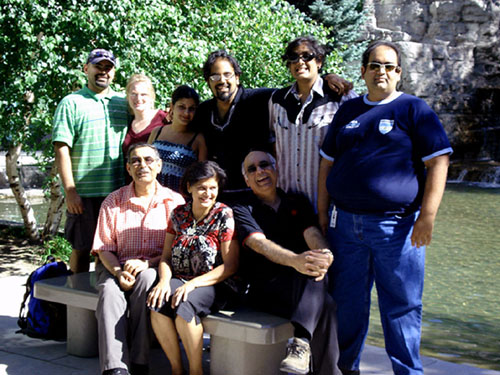By Fazeela Jiwa, October 15, 2012
Since 15-year-old Amanda Todd died by suicide, weeks after posting a heart-wrenching video explaining her three-year struggle with sexist harassment, the media has erupted with moral statements about “bullying” in schools and online.
While awareness-raising campaigns and actions about teenage bullying are important, this term is too vague to adequately address why it happens.
“Bullying” glosses over structural reasons for violence—reasons like race, gender, ability, and sexuality, among a myriad of insidious social hierarchies.
Fighting and self-harm are reactions to material power imbalances that become obscured, then disregarded, when we talk about specific social violence in generic terms like “bullying”.
As a high-school student in Surrey years ago, I witnessed brawling wars between Vietnamese, Polish, and Punjabi groups. When teachers lectured us about bullying, their words did not confront what was really going on—these battles resulted from racism, not generic, childish violence.
As a high-school student in Surrey years ago, I witnessed brawling wars between Vietnamese, Polish, and Punjabi groups. When teachers lectured us about bullying, their words did not confront what was really going on—these battles resulted from racism, not generic, childish violence.
Now as an educator, I see similar student indifference in the face of ambiguous terms and the irrelevance of their presentation. It is unfortunately rare to see groups like B.C.’s youth-based Leave Out Violence artistically and creatively address the specific issues of racism, poverty, sexism, and sexuality—sans jargon.
Why is hardly anyone talking about the sexism and misogyny involved in Amanda Todd’s life and death?
Why is hardly anyone talking about the sexism and misogyny involved in Amanda Todd’s life and death?
Her silent YouTube video clearly suggests that hers is one of many cases of harassment and coercion of young women by young men: the first one encouraged her for a year to show her breasts to him on webcam, threatened to shame her with evidence of her “impropriety” if she did not perform more sexual acts for him, and knew names and locations of her family, friends, home, and school.
The second one used her low self-esteem to convince Todd to have sex with him, then pitted his girlfriend against her in a brutal confrontation that lead to Todd’s initial suicide attempt.
Internalized misogyny is an important aspect of the structural violence associated with patriarchy: the young women in Todd’s life turned against her rather than supporting her through harassment, despite surely facing similar pressures to capitulate to male definitions of, and demands on, female sexuality.
Thanks in part to the media frenzy surrounding the controversial SlutWalk, the conversation about woman-blaming is active; women around the world have rallied with the message that we are not to be held responsible for sexist violence against us.
This analysis should continue in the commentary about Amanda Todd’s experience—it is hypocritical to shun a young girl for engaging with her sexuality or falling prey to a coercive man’s attentions online, while media and other cultural influences reiterate the message that a woman’s worth is tied to her sexual appeal.
Violent behavior stems from a tolerance of, or a reluctance to acknowledge, the power imbalances mired in the fabric of our social structures at all age levels. “Bullying” is not only a child’s issue, but the vague term allows us to treat it like a teenage anomaly. The same oppressive learned behaviours occur in the workplace, in bars and clubs, on the street, and in other adult-inhabited places.
October has been named a National “Anti-Bullying” month.
Violent behavior stems from a tolerance of, or a reluctance to acknowledge, the power imbalances mired in the fabric of our social structures at all age levels. “Bullying” is not only a child’s issue, but the vague term allows us to treat it like a teenage anomaly. The same oppressive learned behaviours occur in the workplace, in bars and clubs, on the street, and in other adult-inhabited places.
October has been named a National “Anti-Bullying” month.
If institutions like schools and government-funded media outlets do not begin addressing the specifics of social violence as their own issues, in ways that are relevant to students and adults, generic anti-bullying campaigns will continue be a waste of time. We must name sexism and other power imbalances for what they are before we can consciously diminish their influence on our social interactions.
Copyright Fazeela Jiwa. Fazeela is a feminist scholar, writer, and educator based in Vancouver.
Copyright Fazeela Jiwa. Fazeela is a feminist scholar, writer, and educator based in Vancouver.




No comments:
Post a Comment